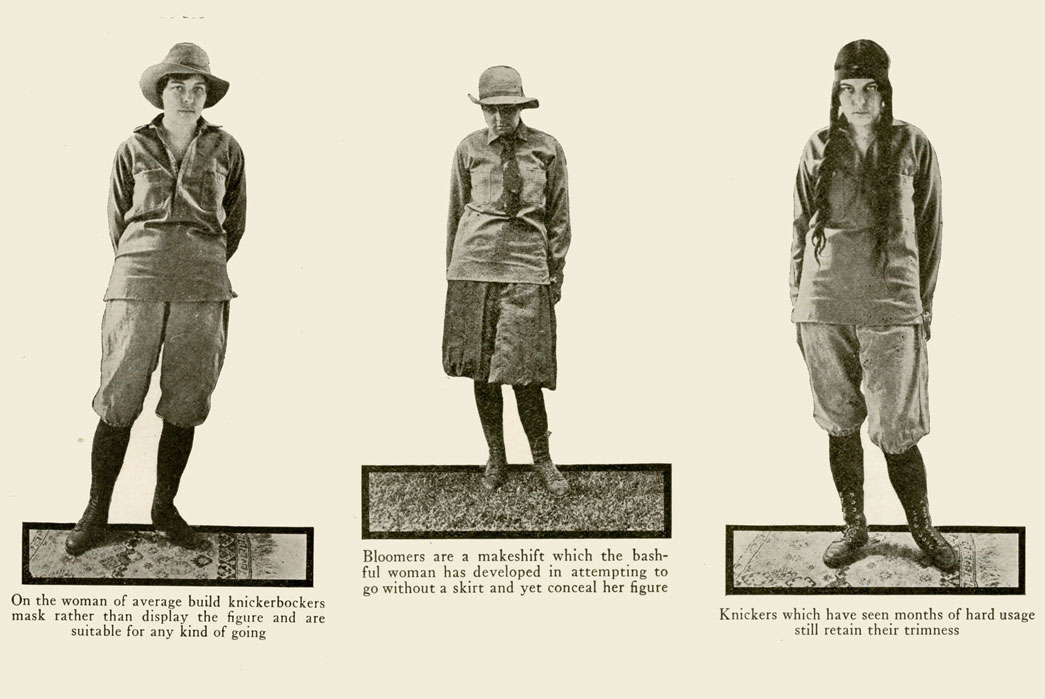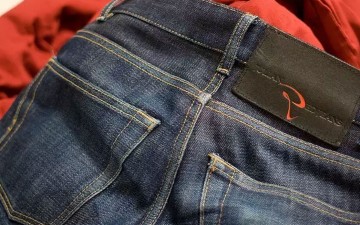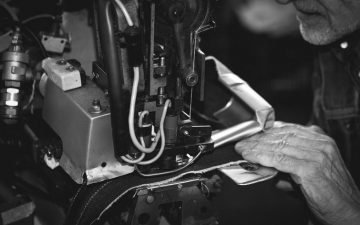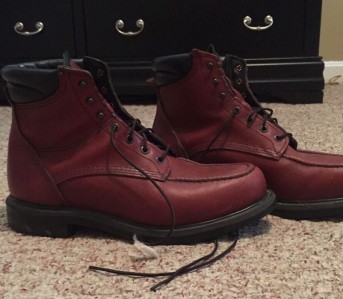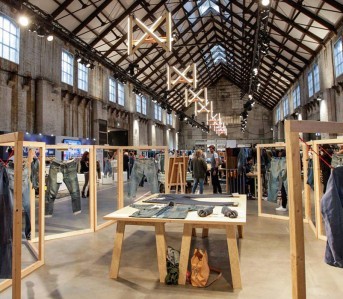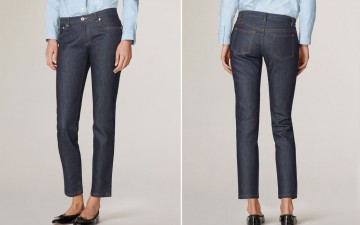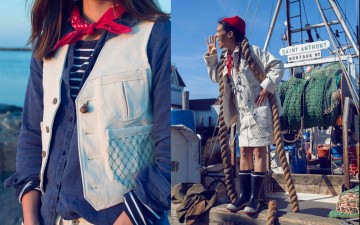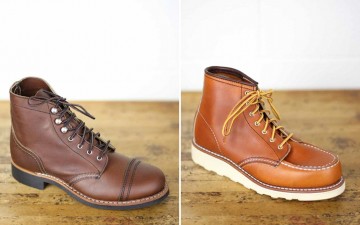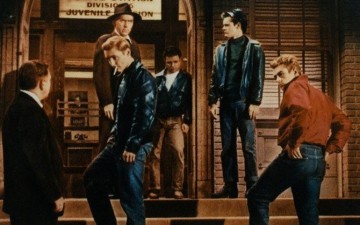Author’s Notes: You might know me as the voice behind the blog and brand, Archival Clothing. In 2006, I started Archival as a place to document my love of early outdoor apparel (and Japanese sites selling American brands unavailable in the United States). My primary focus was on heritage clothing for women before “heritage” itself was a codified style.
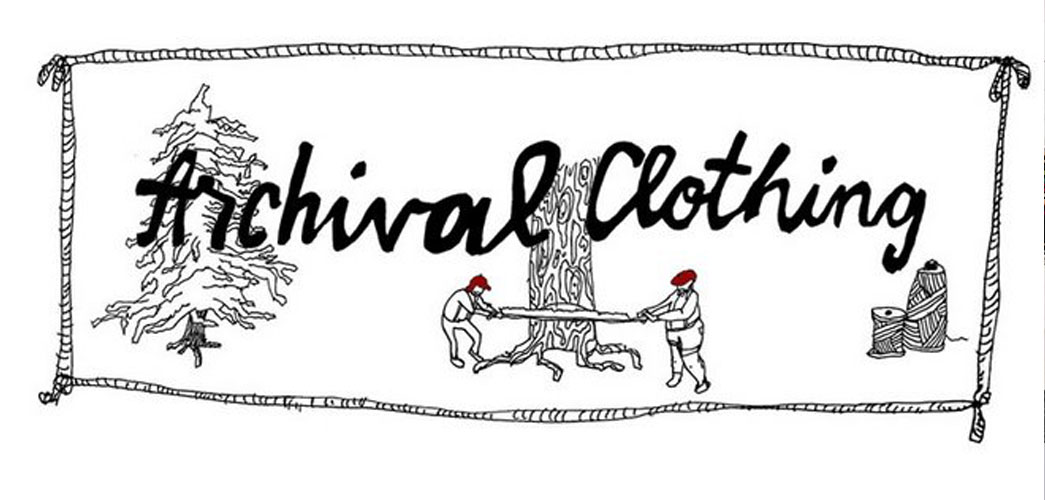
Original 2006 Archival Clothing blog header by illustrator, Ryan Blomberg.
A typical early Archival blog post might feature catalog scans from an Abercrombie and Fitch catalog from 1939 or screen grabs of a Gokey boot only sold in Tokyo. My unique skew on the matter came from the fact that I was a woman looking to the past for better examples of heritage clothing (in the absence of suitable present day offerings) and to Japan for heritage inspired brands that offered clothing in smaller sizes (for women and petite gents).
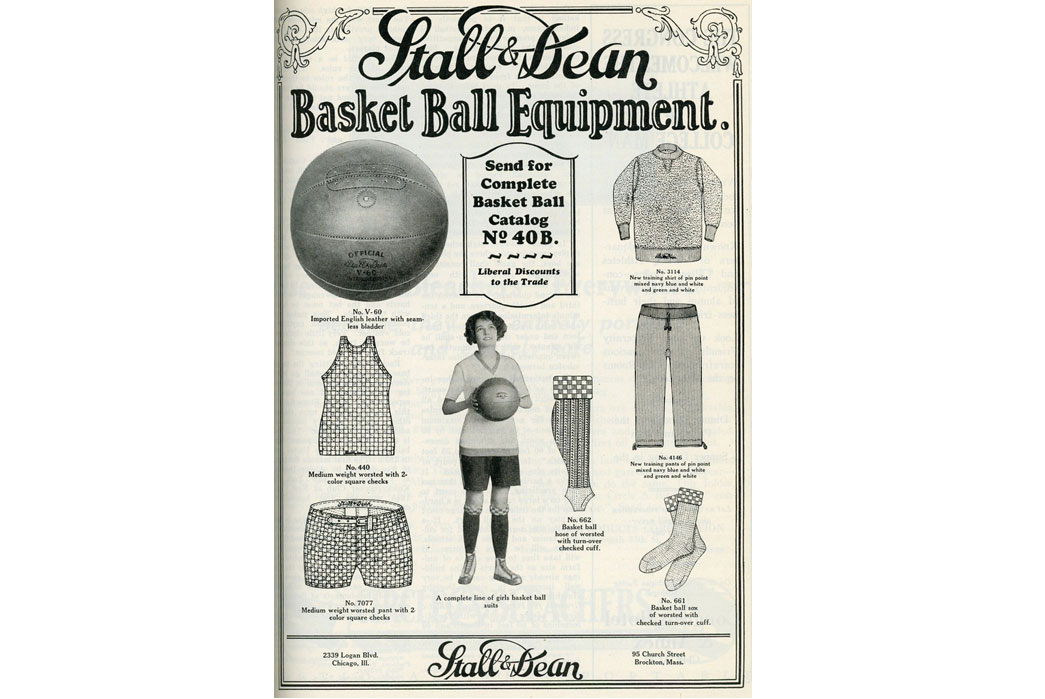
Stall & Dean advertisement for women’s basketball equipment (date unkown).
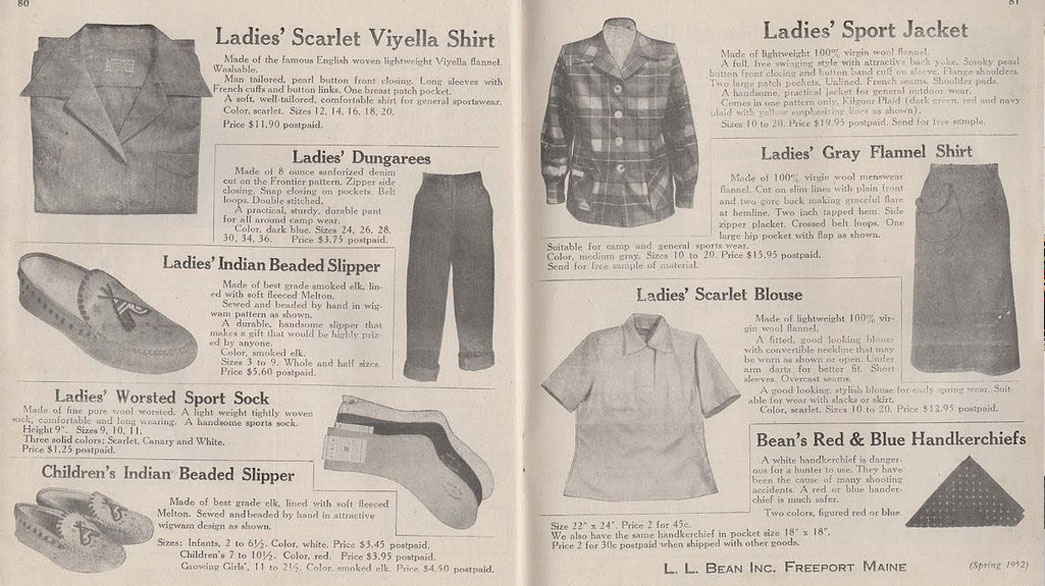
Scan from a 1952 LL Bean catalog.
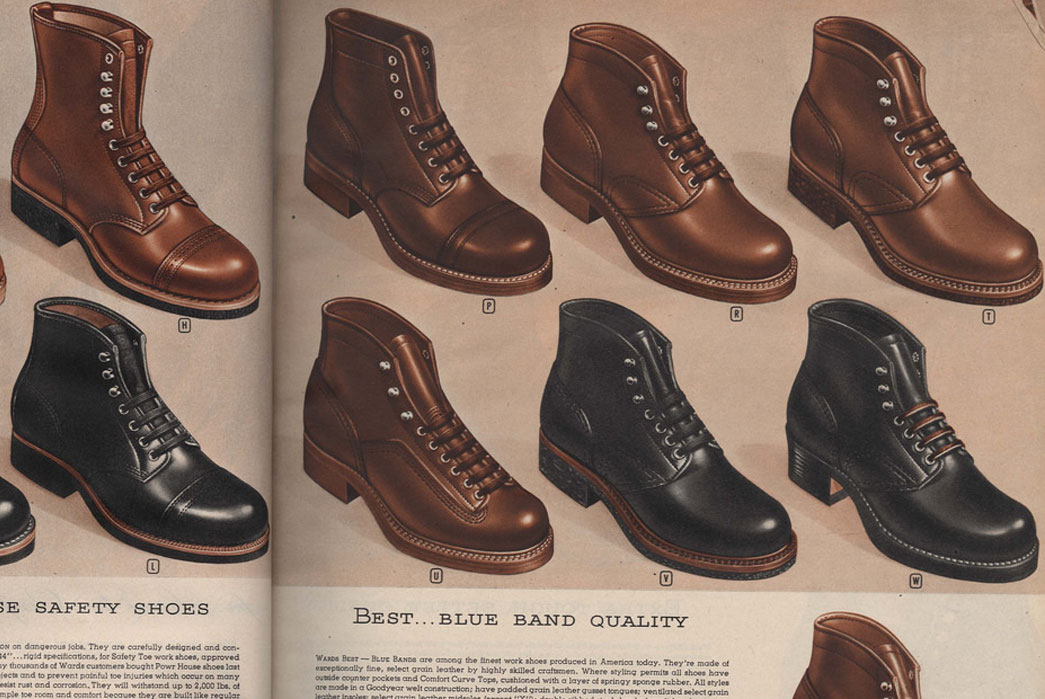
Montgomery Ward “best quality” footwear options from 1947.
Ultimately, the Archival blog was inspired by the question…”If one could mail order something today from the 1947 Montgomery Ward catalog (my bible at the time), what would it be?”
In 2008, an LA Times article on the emerging heritage trend changed my life. Archival was mentioned in the piece alongside the mighty A Continuous Lean and the sadly AWOL Reference Library. In the article, the author notes that “the passion for Americana has moved beyond pure inspiration; now it’s about owning the real thing.”
In my case, the passion for the real thing transformed me from a blogger into the creative director of an apparel company (co-founded by myself and two friends). I went from stalking screengrabs of Japan only US products to helping to create special make ups of Archival bags for the Japanese market (sample example from Journal Standard).

In Tokyo selling Archival at Pop Up Portland. Posing with the owner of Warehouse Co. and the Japanese distributor of Ebbets Field Flannels.
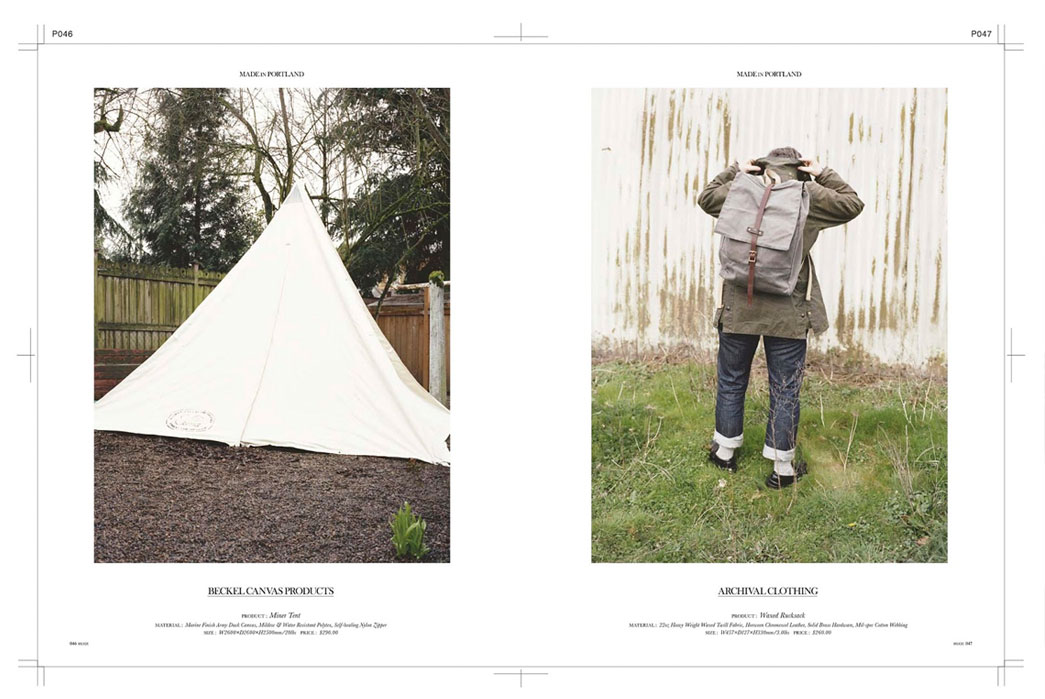
Me posing with an Archival Rucksack for a 2012 story in Huge magazine about made in USA brands.
In 2016, with the closure of Archival (long story short), I’m returning to my exploration of U.S. garment histories (with nods to the UK and France), focusing on outdoor apparel for women and gents from the early to mid-twentieth century.
In this new monthly column, Ward Order Blank, I plan to revisit favorite Archival subjects (catalog scans, brand histories, Japan finds) and once again, shop from the past. I also hope to catch up with many of the makers, bloggers, creatives, collaborators and designers that I met during past six years at shows, shops and on social media (what I term my heritage A-Z list).
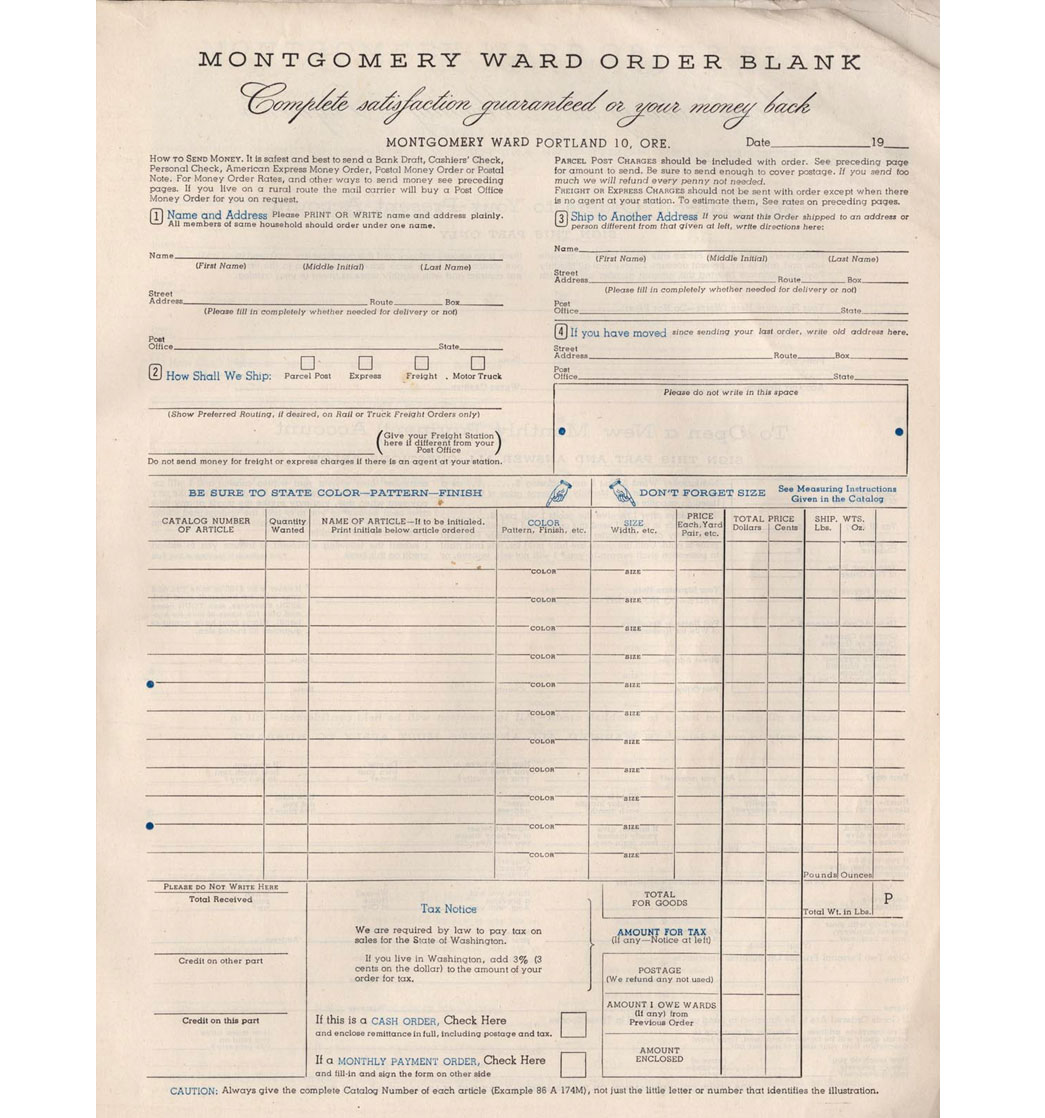
Montgomery Ward order blank from 1947. What would you buy?
Outing magazine, an early twentieth-century sporting publication, provides us with a unique view of early outdoor apparel for women. Outing started publishing in 1882 as an illustrated cycling magazine and eventually morphed into a general outdoor recreation publication with a special emphasis on climbing, canoeing, fishing, golfing, tramping, and automobiling.
Sample titles from 1913 include “The Automobile as an Aid to Vacation,” “Climbing for Goats in the Cascades,” “Knives I have Known,” and “Cocoa-Can Cookery.” The magazine ceased publication in 1923.
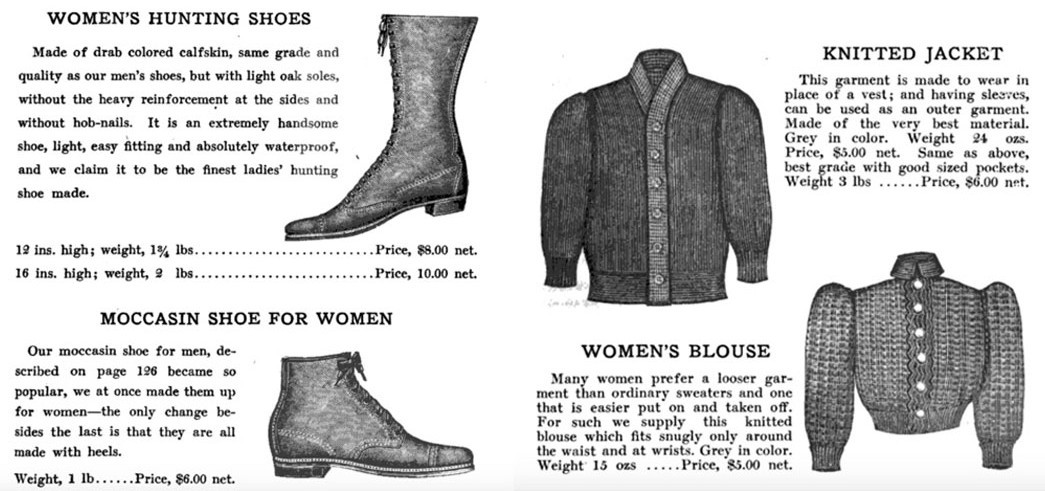
Abercrombie and Fitch 1907 Catalog and Price List for Explorers, Campers, Prospectors, and Hunters.
Browsing back issues of Outing in search of content related to packs, I stumbled upon a number of articles written by women about clothing and gear. From researching ads and catalogs from the era, I knew that apparel manufacturers were beginning to offer items for an emerging market of female outdoor enthusiasts.
In 1907, for example, Abercrombie and Fitch’s Catalogue of Offerings for Explorer, Campers, Prospectors, and Hunters, sold both hunting shoes and moccasins for women as well as an assortment of knits, caps, and socks. The catalog copy reinforces a theme repeated by many Outing authors: “A suitable hunting, fishing, or outing shoe for women has heretofore always been difficult to furnish.”
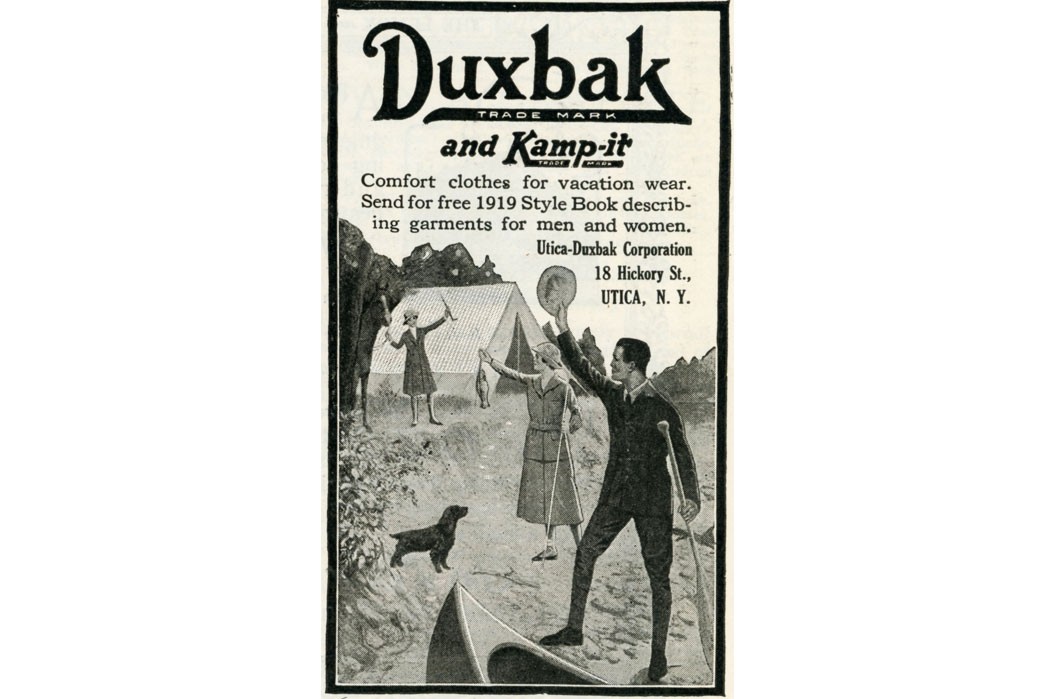
1917 Duxbak advertisements for camp clothing for men and women (the themes of comfort and freedom repeat themselves again and again in Outing advice columns for women).
In “Clothes for Woodsmen,” Kathrene Gedney Pinkerton wonders aloud why garment makers have not responded to the emerging demand for ready-made, out-of-doors clothing for women:
When women became enthusiastic motorists, store windows were crowded with suitable and becoming motoring garments . . . . But when women became canoeists and campers in the real forests, the makers of clothes took no heed, and the correct outing garments for women continued to be the sort that could be worn only in nicely conducted canoeing clubs or in forests retreats where screened porches and graveled walks abound.
Men, she says, have it much easier:
The out-of-doors man enjoys his out-of-doors clothes. His business suit may be a subject of indifference to him and left entirely to the judgement of his tailor. But his choice of outing trousers is of serious moment and requires great discrimination. Once chosen, they are lovingly displayed, and the fact that in a few weeks they will be covered with grease and perhaps torn by brush does not deter him from purchasing the best.
In her article, “A Woman’s Camping Outfit”, author and noted canoeing authority Sara Stokes Baxter chides sporting publications like Outing for neglecting female readers by failing to address them in equipment reviews or advice columns:
Women have, it seems to me, been neglected in the many articles which appear monthly with advice to campers. The road for men is made quite easy – they are told what they will need in every possible woods expedition, while women are left to their imaginations and the counsel of friends with no more experience than themselves in starting on their first trip. Many, I am sure, return with the feeling the hardships are too great, the life too tiring, and decide upon leaving such pastimes to the men, all because they have been dressed unsuitably and their clothing has prevented the freedom of movement so necessary to enjoyment.
So what sort of advice did Outing authors have to offer women looking to outfit themselves for camping and canoeing when these “innovations in activity” were relatively novel for women? How did one put together a suitable outfit for the woods when very few manufacturers offered fit-for-purpose apparel for women?
Echoing the language of many of the advertisements for gents in the publication, most advocate for clothing that is “comfortable, suitable, convenient, and adequate to the demand which may be made upon them (Pinkerton).” The ultimate goal, says Pinkerton, is to source clothing that permits an individual to experience “real participation” in the out-of-doors.
What, in the imaginations of Outing authors, did a dedicated camp outfit look like? How did one assemble an outfit in the absence of a dedicated outfitter and what did it look like? Here’s what I could patch together from text and images (some from the Outing, some from my own collection of print catalog ephemera and some from Flickr Commons).
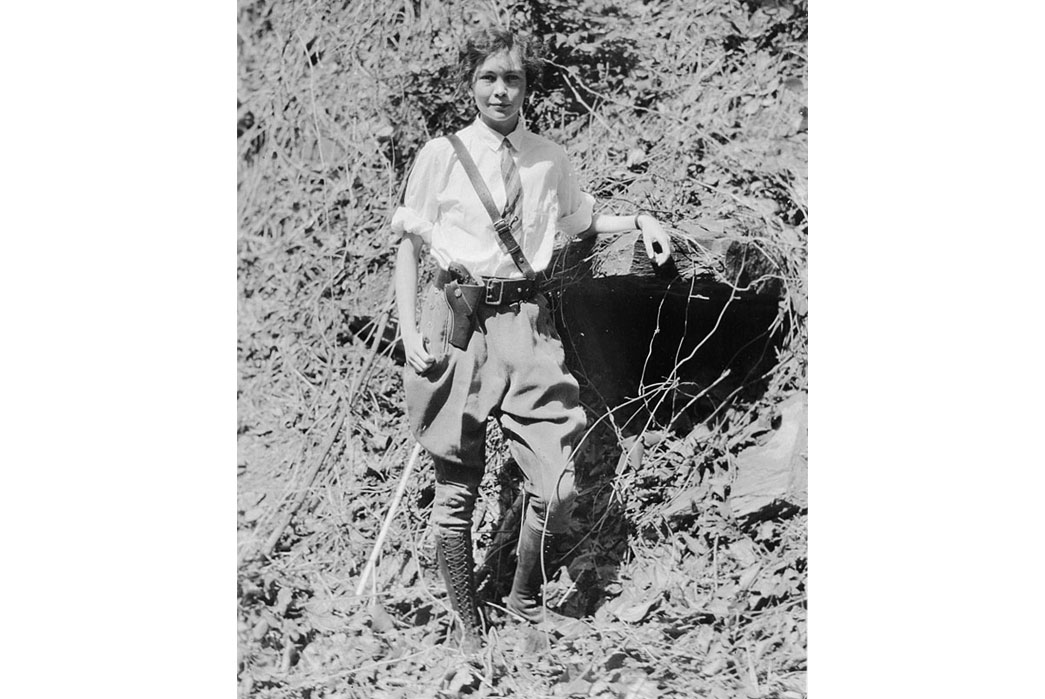
Annn (“Vesse”) Dahl, early Norwegian adventurer, sporting a typical outdoor uniform for women in the early twentieth century: riding breeches, moccasin boots, sturdy belt and tailored shirt. Steward Edward White: “A great many wear an ordinary cotton work shirt, relying for warmth on the underclothes.”
Knickerbockers for Safety
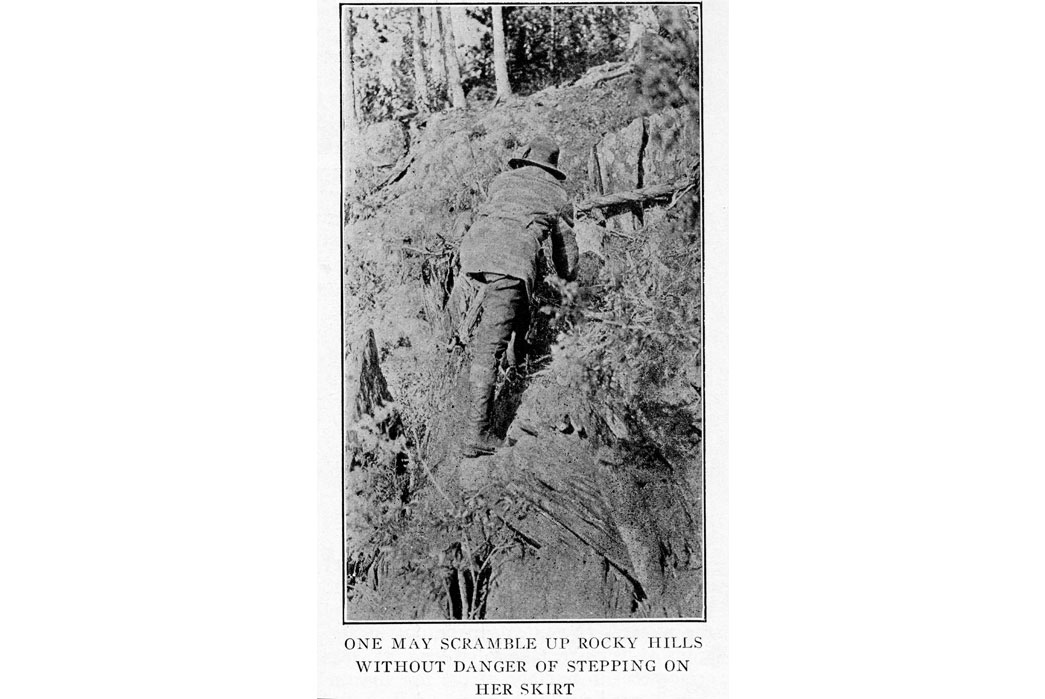
As late as 1916, Outing authors were grappling with the issue of whether women should wear trousers or skirts in the woods. In “Skirts or What?,” subtitled, “Should the Woman in the Woods Wear Skirt Bloomers, Riding Breeches, or Knickerbockers,” author William Whiting debates the merits of each garment type, arguing that the issue boils down to safety as much as freedom: “If the enthusiastic sportswoman is spilled from a canoe she is very glad if she finds herself with the free leg action possible only in knickerbockers. The only reason for wearing a skirt on an active outing is modesty.”
Baxter, roughly a decade earlier, sounds the same alarm regarding safety and skirts in the woods: “I consider again down a rough mountain on foot extremely dangerous in a skirt, for no matter how short it may be there is risk of its catching on some projection when a jump has to be made.” Both Baxter and Pinkerton agree that knickerbockers, plus fours or riding breeches, are ideal for the woods, providing total comfort and freedom when mooring a canoe or scrambling through brush: “they should be like a man’s in every detail, with loops for a leather belt, and pockets, which will be found very convenient for carrying small articles” (Baxter).
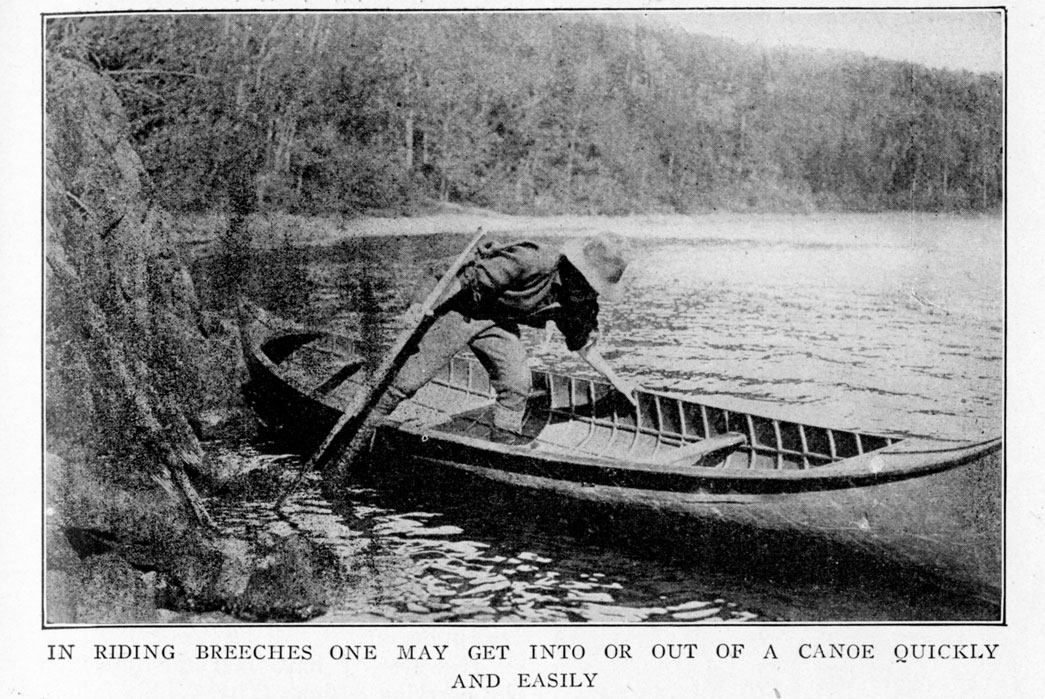
In “Clothes for Woodsmen,” Katherene Gedney Pinkerton, a frequent contributor to Outing and an authority on canoe outfitting, makes her case for riding breeches for forest wear: “[b]ecause each knee is dressed separately the paddle stroke is not restricted by the strain on the skirt.”
Freedom to Roam
The theme of “freedom” and “comfort” return over and over again for Baxter and Pinkerton: “The fact that, in riding breeches, one can do things with a minimum effort is important” (Pinkerton). Freedom means being able to keep up with the men on an outing and not letting your own costume become its own hazard.
William Whiting further argues that the modern camp outfit for a sportswoman also must provide her with freedom from the elements: “She must be warm in cold weather, not too warm in hot weather, not be bedraggled to helplessness when it rains, nor snagged every few minutes in rough going by stepping on her skirt or getting caught on a stub.”
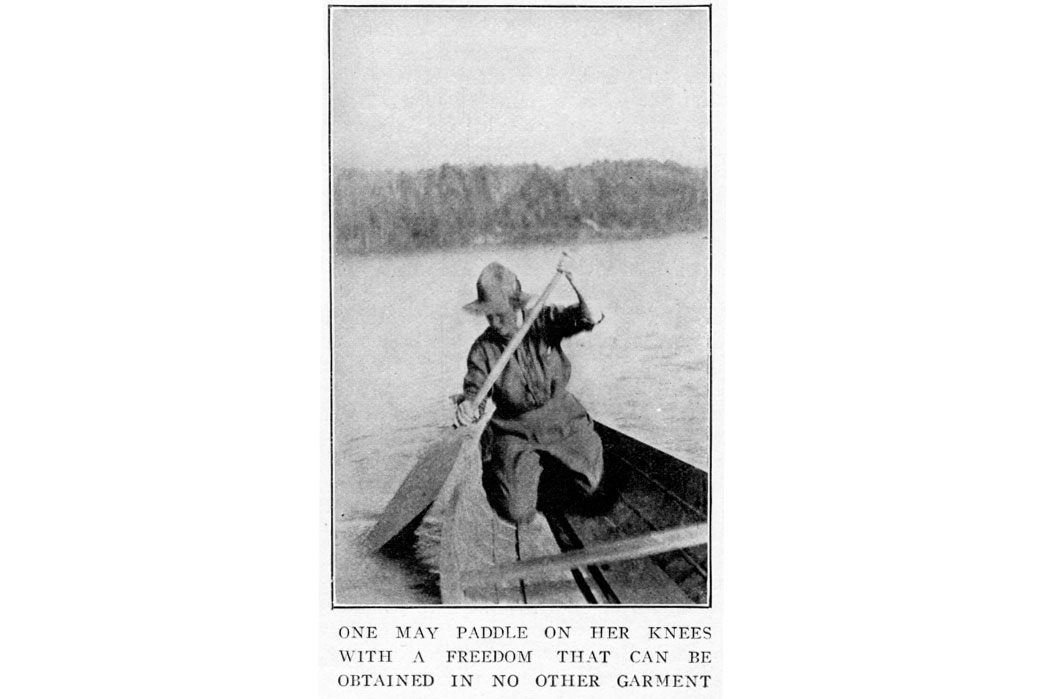
Pinkerton recommends having riding breeches tailored from a pattern using men’s heavy suiting.
Made to Measure
Where does one buy knickerbockers for women in 1905? Baxter directs her reader to the tailoring department of a high class sporting-goods store. She reiterates that men’s or boy’s patterns will not do and that the only option is for a woman to have something made to measure: “Nothing ready-made will do, as boys or men’s breeches never fit a woman, so they must be made to measure.”
Pinkerton herself sources heavy woolen suiting on sale and takes it to a tailor who creates riding breeches for her from a pattern: “The cloth cost $2.50, the making $4. So my riding breeches cost less than seven dollars. I have worn them exclusively for six months.”
Wool, the Gore-Tex of its Day
In “What Two Women Wore,” Emma Curtiss Tucker provides a quick overview of the camp outfits that she and her companion, Myrtle King, wore on their walk from Washington, D.C. to Oregon in 1922 (more on this fabulous story in a future report). Tucker and King both wore riding breeches, “Miss King’s of corduroy, mine of woolen stuff.” In 1905, “woolen stuff” was clearly the gore-tex of its day.
While individual authors recommend different weights and weaves of wool (from Loden to mackinaw to Forestry cloth), they all agree on its merits: “[w]arm enough for winter use without interlining and comes in good colors which are somewhat mottled and thus do not show dirt.” Pinkerton picks up men’s suiting for her riding breeches, preferring a wool “with an extremely hard finish, [that] would not catch on brush, and was so tightly woven as to be almost waterproof.”
As an alternative, for expeditions through brambles or thick woods, Sara Stokes Baxter recommends corduroy or whipcord: “It is impossible, I believe, to find a material which will shed burs and will be warm when wet. Beyond a doubt khaki is the best all-round material for camping in California and sections of the country where one is sure not to meet with rain or a drop of temperature during the summer months.” Finally, writing in 1922, Ethel G. Hoyle, champions Forestry cloth, developed by the U.S. Forest Service, for its ability to perform in cold weather, resist brush and conceal dirt:
Forestry cloth, a dark brownish green, is becoming to everyone, shows soil as little as anything and comes in three weights – heavy and light serge, and flannel. It is tough and closely woven and catches on stubs and twigs less easily than any other fabric. It will even allow a good deal of scrubbing and sliding over rocks. This is why it has been suitable for the uniforms of the U.S. Government Forest Service.
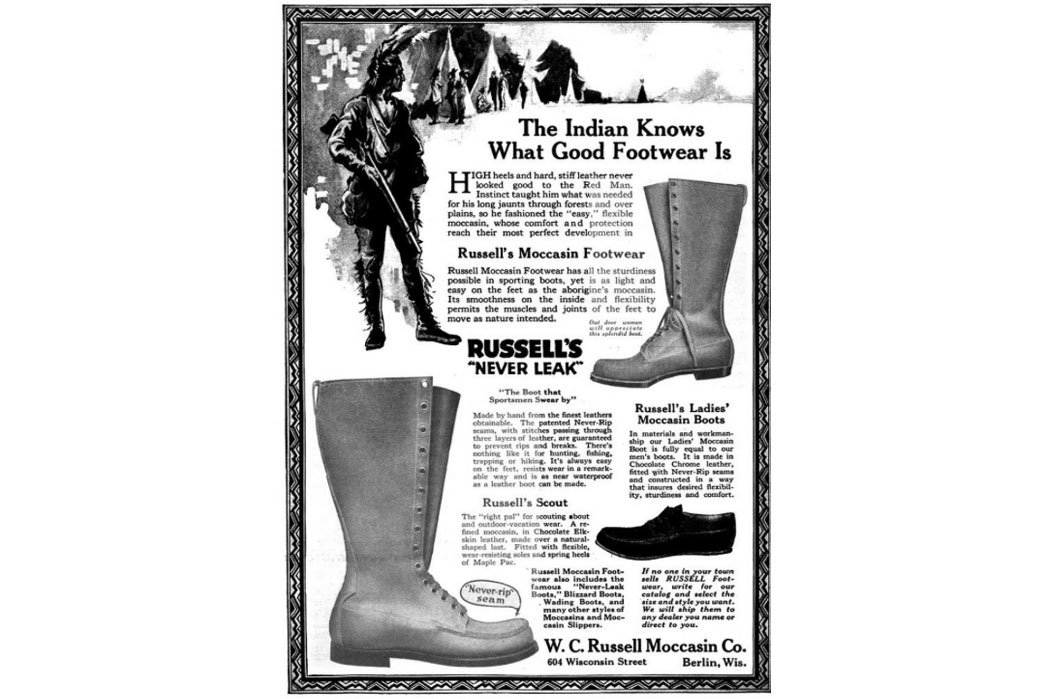
1917 Russell Moccasin Co. advertisement featuring models for women.
Footwear
One thing that all Outing authors agree upon is the importance of proper footwear for tramping in the woods: “Dressing the feet for tramping might consume a whole story in itself but some mention of it is not amiss here (Holye).” Pinkerton summarizes the issue: “On no other item of costume does your comfort depend as much on your shoes. Do not buy blindly and with good great faith in the arguments of manufacturers and too little in your feelings.”
Pinkerton’s shopping advice to readers would well be followed today: “In general, I would say, look well to the sewing, the sole and the place where the sole bends. Assure yourself that the sewing is strong, that the thickness of the sole is due to leather rather than padding, and that it bends at the ball of the foot instead of the instep.” For camp, she recommends a pair of moose hide moccasins: “By Spring, I will have had nothing else on my feet for six months.”
For her tramp across the United States, Emma Curtiss Tucker drops one of the few brand name references found in my research of early Outing magazines: “We wore knitted gray wool army socks, and strong but lightweight shoes: Miss King’s were Boy Scout shoes, mine Russell moccasins with rubber heels added.”
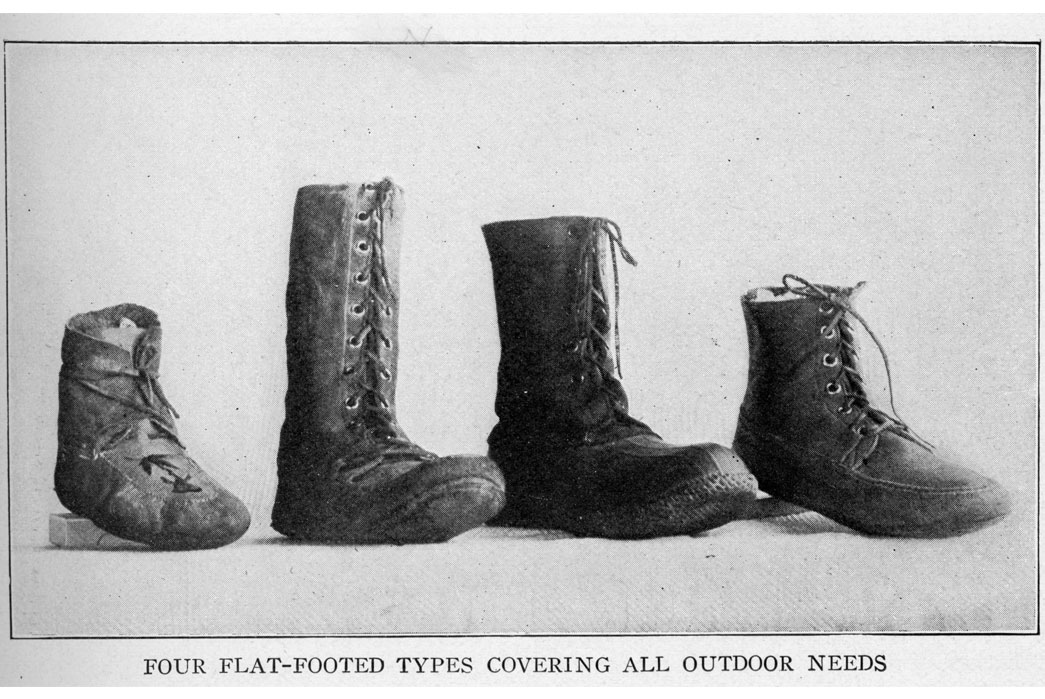
Moccasin construction footwear for camping and expedition wear. White: “The ideal footwear should give security, be easy on the feet, wear well, and give absolute protection.”
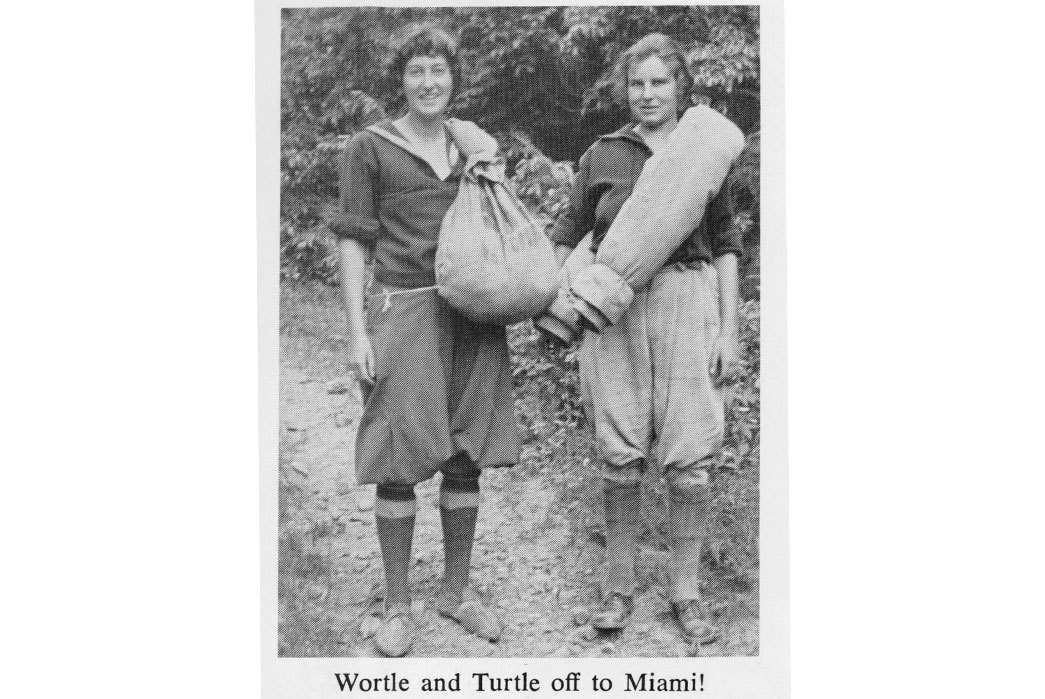
Emma Curtiss Tucker sporting Russell Moccasins with rubber heels which she wore on a tramp from Washington D.C. to Oregon.
Sweaters and Outerwear
One of the more interesting discoveries I made during my research is the generally negative attitude towards jackets. Since I love Duxbak and related canvas duck outerwear from this period, I was surprised to find that it was not held in high regard by many of the authors I read. Here is a sample comment from Stewart Edward White:
A coat is useless absolutely. A sweater is better as far as warmth goes; a waist coat beats it for pockets. You will not wear it during the day; it wads up too much to be of use at night. Even your trousers rolled up make a better temporary pillow.
Instead of a heavy jacket, most Outing’s author champion variations on a layering system that involves waist coats, ponchos, athletic underwear, and wool knit sweaters (“for early warmth in the morning and evening”). Stewart recommends a sweater as essential camp kit, impressing on his readers the importance of buying “the best you can buy.”
Emma Curtiss Tucker, whose mantra was comfort without conveniences, opted not to even carry a jacket on her cross country trip, preferring instead to bring along only a warm sweater. Baxter acknowledges my own interest in the style factor that a jacket brings to an ensemble (“making a costume more complete”) but recommends against their use save for when a trip includes passage through difficult conditions:
While the coat may make the costume more complete and look better than a sweater on many women, it is doubtful whether it is useful enough to pay for its bulk on a canoe trip or where it is necessary to go light. In case of rain a poncho, described later, takes its place over a sweater. But whenever a tramp lies through thick woods, where a sweater would catch on brambles, a coat is indispensable. If decided on, it should be Norfolk style, exactly like a man’s, with broad shoulders and big pockets, and must be large enough to slip easily over a sweater.
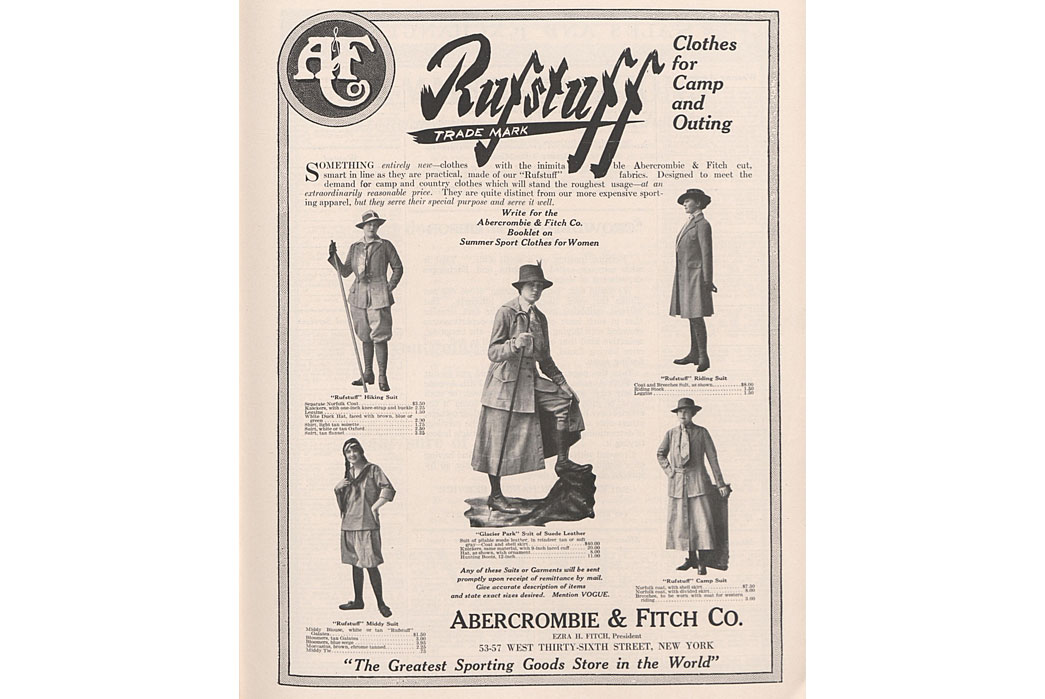
Norfolk jackets and camping suits on offer for women from Abercrombie and Fitch.
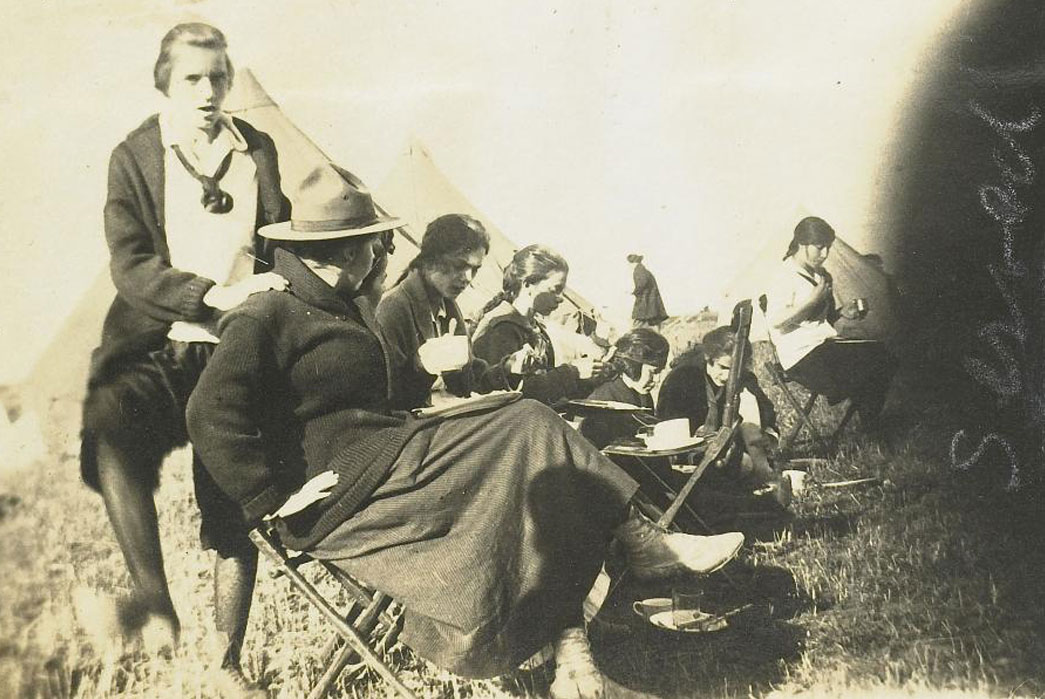
Knit wool shawl collar cardigan. Perfect for layering at camp but limited as a barrier against brush, rain and wind.
Conclusion
What are my takeaways from reviewing the Outing articles? First, I love the repeated (refreshing) refrain that outdoor garb for women should be made from the same patterns–and materials–as designs for men. I love the simplicity of the fabrics (wool, corduroy, linen, and moleskin) and colorways (“Forestry cloth, a dark brownish green, is becoming to everyone”).
But foremost, I admire the resourcefulness of the authors in sourcing camp clothing when nothing ready-made existed. While the outfits put forward by these authors roughly resemble each other (same basic layering framework and accessorizing), there is still a DIY quality to the end result. Here, for a moment, we have a stripped down and purpose built conceptualization of outdoor clothing, one that is defined by the individual user’s imagination, so to speak, rather than by a manufacturer, brand campaign, or social etiquette.
By 1922, Ethel G. Hoyle remarks on the progress made in outfitting women for the woods: “[o]ne can now buy in good shops the usual jacket skirt suit plus knickers and hat all of the same wool tweed. This is a big step in the right direction. One may soon have tramping clothes as familiar a costume among us as riding clothes long have been.” Hoyle credits fellow female trampers (rather than garment makers) with having solved the problem of designing a suitable outfit for the woods: Like Baxter and Pinkerton, Hoyle reiterates the need to pass along this advice to novice female campers so as to “shorten the fumbling period for others”:
My only advice is to be guided first by imagination and observation, then by experience, and to learn by doing. In fact, the school of the woods is the school of experience, and those who go before can only present ideas for us to try out.
Ultimately, as someone who has felt let down by the availability of heritage style clothing for women in the present day (more on this later), I am inspired by these Outing authors (and my own experience) to go forward and create my own out-of-doors camp uniform. I will most likely begin the process by browsing more back issues of Outing for inspiration, shopping from eBay for bolts of forestry cloth, and visiting Unsung Sewing Patters, an amazing resource for historical garment patterns.
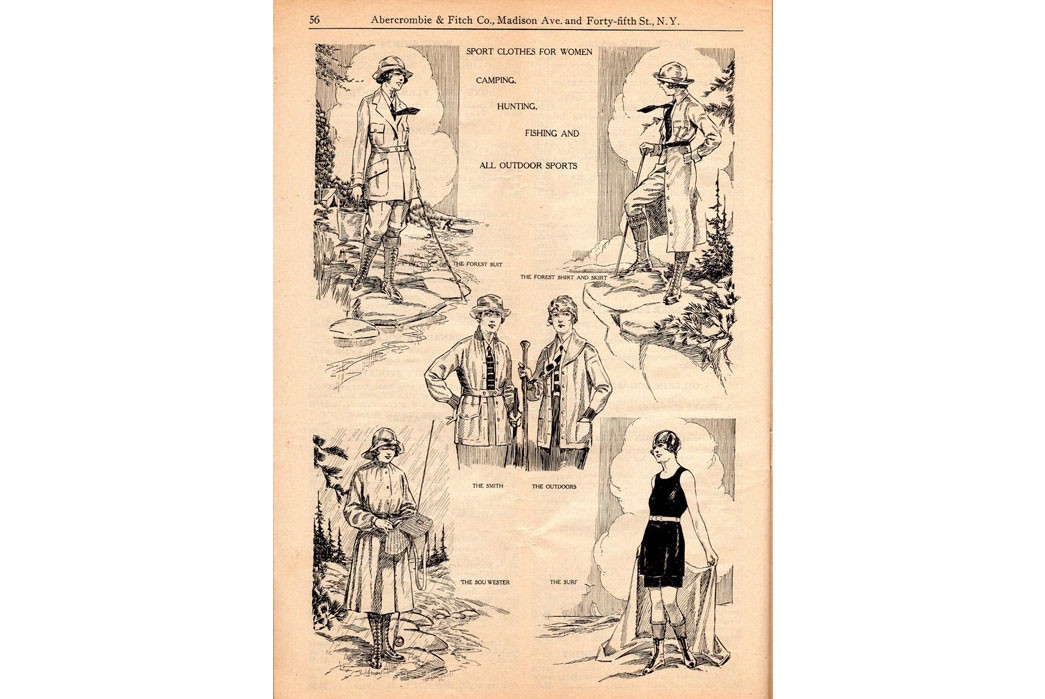
By the early 1920s, manufacturers like Abercrombie and Fitch were starting to codify outdoor outfits for women by activity type.
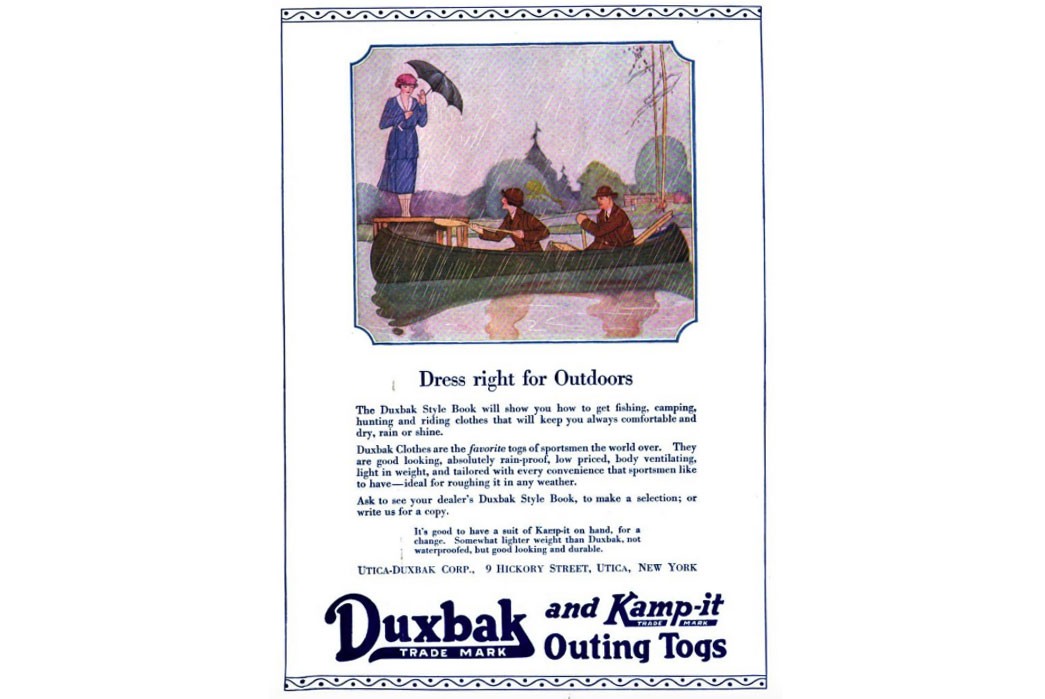
Early ad for Duxbak Style Book highlighting the preferred features of early camp clothing: “good looking, absolutely rain proof, low priced, body ventilating, light in weight and tailored with every convenience that sportsmen like too have – ideal for roughing it in any weather.”
Sources
- Baxter, Sara Stokes.“A Woman’s Camping Outfit: The Things That She Must Take, Those That She May Take, and a Few She Should Never Take.” Outing, Aug 1905, pp. 634-638.
- Hoyle, Ethel G. “Dressing the Outdoor Woman.” Outing, Feb 1922, pp. 225-226.
- Pinkerton, Kathrene Gedney, “Clothes for the Woodswomen: How One Woman Solved the Problem of Comfort, Durability, and Cheapness in the Wilderness Wardrobe.” Outing, April 1913, pp. 458-463.
- Tucker, Emma Curtiss. “What Two Women Wore: Not a Matter of Social Etiquette, But Merely What Clothes to Get When You Walk from Washington D.C. to Oregon.” Outing, Mar 1922, pp. 251.
- White, Stewart Edward. “Camp Equipment.” Outing Magazine, Jan 1907, pp. 538-542.
- Whiting, William. “Skirts or What? Outing Magazine, Oct 1916, pp. 30-33.

